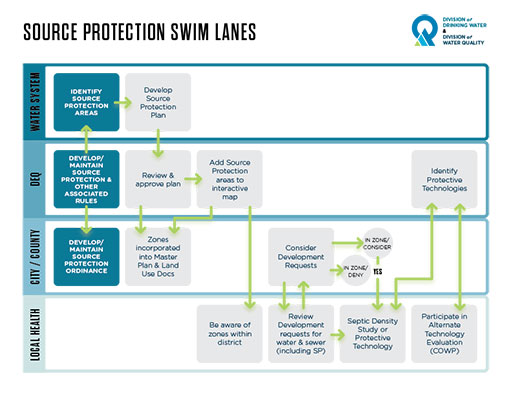Across Utah, development pressures have placed groundwater protection and local development interests at odds with one another, especially in non-sewered areas where onsite wastewater systems (OWS), otherwise known as septic tanks, are the preferred method for addressing wastewater. Protecting groundwater quality is critical because wells and springs are vulnerable to contamination.
The Utah Department of Environmental Quality (DEQ) has developed two reports, intended to be complementary to one another, to address this issue:
- Technical Guidance for the Allowance of Alternative Onsite Wastewater Systems within Drinking Water Source Protection Zones.
DEQ prepared this guidance to assist local governments who have sought focused guidance on the use of alternative OWS design and operating standards to “adequately control” pollution within Drinking Water Source Protection (DWSP) zones. This guidance focuses on the criteria permitting agencies can use to determine whether an alternative OWS may be tolerated on an existing, platted residential lot. - Planning for Onsite Wastewater Disposal Systems in Non-Sewered Areas of the State: Tools for Preventing Contamination of Public Drinking Water Sources.
DEQ prepared this guidance to assist local health departments (LHD), local governments, and Public Water Systems (PWS) with identifying processes that will safeguard public drinking water sources while alleviating some of the difficulties associated with permitting of OWS in source protection zones.
For additional information on the Division of Drinking Water’s Source Protection program, please visit the About Drinking Water source Protection Program.
For additional information on the Division of Water Quality’s Onsite Wastewater Program, please visit the Onsite Wastewater Program.

